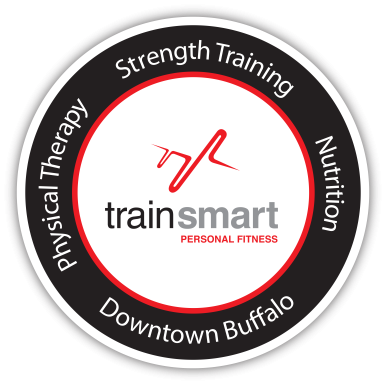By Joe Gagliardo & Jared Rumsey
Functional Tests/Movement Prep
We utilize functional testing and movement preparation to assess and enhance our patients' physical capabilities. This approach is centered around identifying the hardest exercises they can perform well, pinpointing weaknesses or tightness (mechanical sensitivities), and understanding how these factors interfere with their overall function. By identifying low-hanging fruits we aim to address these issues and potentially alleviate larger concerns, such as pain associated with their chief complaint. Our goal is to empower patients to perform these movements at home, fostering strength and improvement in their functional abilities, ultimately reducing pain. The movement prep protocol is designed to increase general physical preparedness (GPP) while decreasing pain. Overall by increasing function we aim to decrease pain. It involves activating sensory afferents, opening up shoulders and hips, engaging the core, preparing the grip, and increasing heart rate. By incorporating exercises like foot rolling, shoulder and hip mobility drills, core activation, and the “shocks and springs”; calf raises and jump rope, we ensure that patients are adequately prepared for more complex movements. We encourage patients to discontinue any movement that causes a pain level of 4/10 or greater to prevent exacerbation of their condition. Again, when performing the functional tests you’re looking for the hardest exercise they can do well and the patients mechanical sensitivities.
**Note: You don’t want to cue the exercises during the functional tests, as this may skew their actual fitness level. But if you believe they are physically able to do an exercise but can’t fully grasp how to perform it a cue may be necessary. So just use your best judgment.**
Rolling Out the Foot:
Sensory afferents send a message to the brain, signaling the need for muscles to fire, priming the muscles of the foot. When assessing, compare one side to the other to determine if one side is more sensitive, which could indicate mechanical sensitivities. Use this assessment at the beginning and end of a session to evaluate any changes. Additionally, observe if the movement prep makes it more or less painful, which can provide insight into the effectiveness of the intervention.
ROM Through the Big Toe:
Big toe extension, or dorsiflexion, is crucial for engaging the glutes effectively during movement. Optimal dorsiflexion is typically around 70°. When the big toe fails to extend properly, it can lead to compensations such as limited hip extension and overactivation of the low back muscles. In a clinical setting, this can manifest as difficulty in performing activities such as walking, running, or squatting efficiently. Limited big toe extension may contribute to gait abnormalities, decreased stability, and even increase risk of injury. Therefore, assessing and addressing big toe extension is essential for restoring proper biomechanics and function, particularly in activities that heavily rely on gluteal muscle engagement. This can be achieved through a toe sit or cowboy sit.
Cat Camel
The cat-camel exercise, often referred to as the cat-cow exercise, is a dynamic movement that involves alternating between arching and rounding the back while on all fours. This movement helps to floss the spinal nerves, meaning it promotes healthy movement and mobility of the nerves within the spinal column. Additionally, the cat-camel exercise helps to rehydrate the spine by encouraging the flow of synovial fluid between the vertebrae, which nourishes the spinal discs and promotes flexibility. Furthermore, the rhythmic motion of the exercise increases blood flow to the spinal area, facilitating the delivery of oxygen and nutrients to the muscles, ligaments, and discs of the spine, promoting overall spinal health and function. To avoid strain, it is recommended to perform only 5-8 repetitions of this exercise.
Plank
Beast Plank
The Beast plank is the starting point for all plank exercise positions. If the patient performs this exercise well then they may progress to harder positions.
Single Leg Beast Plank
The single leg beast plank is the next progression. This position is intended to bias out the leg and assess for unilateral deficits. It identifies imbalances between the shoulders and the hips, where the sagging of hips indicate core anti-rotation weakness. If the patient is strong in this exercise then they can progress further.
Shoulder Tap Beast Plank
The shoulder tap beast plank further assesses the patient's core anti-rotation strength. By noticing any swaying or sagging of the hips during the movement we can assess whether we need to address this in their rehabilitation training. Once again, if this movement is performed well they can progress further.
High Plank
After assessing anti-rotation exercises we progress to a high plank.
Forearm Plank
If the high plank looks good you will progress them to a forearm plank.
After the forearm plank there are various progressions that you may use based on what low-hanging fruit you need to address. For overall core strength and anti-extension, progress them to walk-out planks. To perform a walk-out plank from the high plank position, begin in a plank with your hands directly under your shoulders, then slowly walk your hands forward until your body forms a straight line from head to heels, and then walk your hands back to the starting position. To incorporate big-toe extension perform forearm saw planks and single leg saw planks. To do a forearm saw plank, start in a forearm plank position, then rock your body forward and backward while maintaining a straight line from head to heels. When doing a single leg saw plank we also add in some anti-rotation perturbation. To incorporate the transverse abdominis we can progress plank rolls. To perform a forearm plank roll to a side plank, start in a forearm plank position, then rotate your body to one side, lifting your opposite arm toward the ceiling to form a side plank, making sure to keep the shoulders and hips square with one another and then return to the forearm plank, and repeat on the other side. Based on the patients' needs, choose which progression will benefit them the most and make sure they perform the exercises with correct form.

